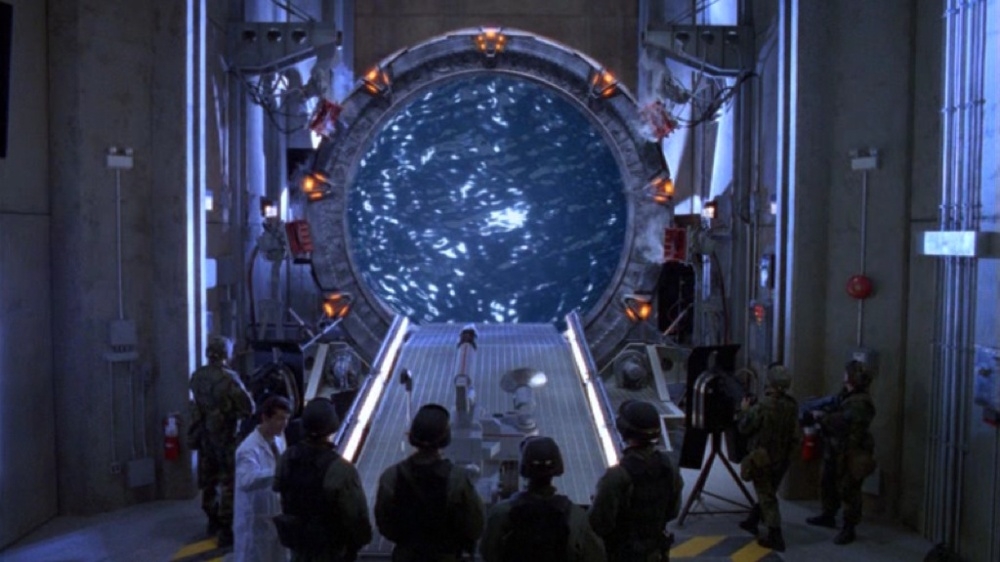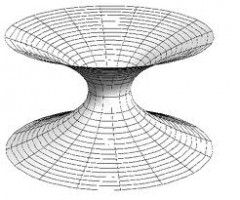
Putting the “Science” in “Science Fiction”: The Stargate
In my last blog, I discussed the ideas of teleportation, and some of the issues that are preventing that much desired technology from becoming feasible. Although there are many hurdles that would need to be overcome before teleportation becomes possible, if it ever does, science fiction offers another idea of how to traverse immense distances instantly. One example of this is the Stargate series’ namesake device.

The Stargate is an upright metal ring that, once properly configured, allows the user to simply step through it in order to instantaneously be transported to another Stargate. As long as the two Stargates are properly configured and powered, there is no real limit to the distance that can be traveled using this method, with Stargates on either side of a room or hundreds of light-years apart being equally reachable. Stargates work by creating a wormhole, or Einstein-Rosen Bridge. A wormhole is essentially a tunnel in space-time that connects two distant points, allowing for fast travel between the two points without crossing the intervening space. The idea of a wormhole can be difficult to visualize, but can easily be demonstrated with a piece of paper. If a pair of dots is drawn at opposite ends of a piece of paper, the dots will remain the same distance apart forever. However, if the paper is folded, the two dots can be touched together. In the same way, a wormhole creates folds in space and time that connect two distant points, even allowing travel through it. Wormhole travel would likely not be instantaneous, but it would be much faster than traveling the intervening distance normally.

Another advantage of wormhole travel is that it would allow for distances to be crossed more quickly than light while allowing the traveler to move at conventional speeds. Rather than accelerating the traveler, a wormhole makes travel possible by reducing the distance that needs to be traveled. Because of their links to the fabric of space-time, it may also be possible to use wormholes for time travel, although a traveler could not go back farther in time than when the wormhole was created. According to some physicists, wormholes might even allow people to travel to different universes.
Wormholes are a strange concept to consider, but many scientists believe they fit comfortably within the theory of general relativity and could therefore be created or even exist naturally. Work is currently underway to determine if the creation of wormholes would be possible using modern technology. Most of the ideas revolve around the use of strange matter, a theoretical type of matter that defies the conventional laws of physics. However, new examinations into electromagnetic fields, metamaterials and the interactions between them suggest new ways to create wormholes may soon be possible. The wormholes that are under examination only allow electromagnetic waves to travel through them. This creates interesting potential uses for computing, optical cables and the like, but this technology may eventually evolve until it is possible to send objects or supplies through them. This would revolutionize the transportation industry and completely change the way people move about.

Functional wormholes would also open up space exploration like never before. While it may be possible to remotely open a wormhole at a far-off destination in the future, it is likely that each end of a wormhole will have to be physically constructed before it can be used. Even if this is the case, it would allow rapid space exploration through the use of robotic probes which could be sent to another planet, where they would construct whatever machinery is required to open one end of a wormhole. While this happened, workers on earth would construct the other end, and once the system is complete, it would enable explorers to quickly and easily move between planets. Wormhole technology is still very much in its infancy, but if it ever comes to fruition, human society will change forever.









